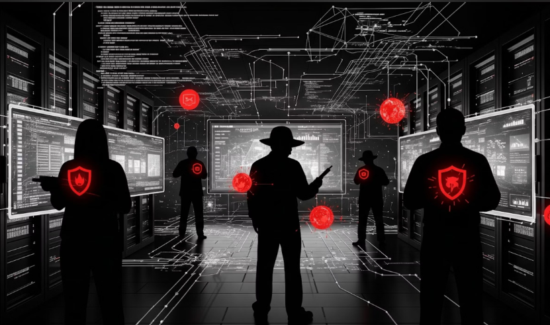The Top 5 Endpoint Security Challenges Facing Businesses in 2020


What are the top five endpoint security challenges facing businesses in 2020? What should your enterprise do to prepare itself against the incoming onslaught of attacks of malware and other attacks?
Let’s face the harsh reality: the new year (and new decade) won’t change the risk you face from hackers and insider threats. If anything, hackers look to become more brazen in their attacks—more destructive and more far-reaching than ever before. Threat actors develop and evolve their malware attacks to evade once-effective detection capabilities and dwell for longer. Of course, the longer malware lingers on your network the more damage it does and the more costly the mitigation.
Additionally, even the most inexperienced of threat actors can purchase malware from the Dark Web; in other words, your organization will need to protect itself from incoming threats at all times. There is no such thing as a minor threat in cybersecurity—not anymore.
But before your business can begin enforcing its cybersecurity policies, it needs to identify the endpoint security challenges facing it in 2020. After all, how can you defend against what you don’t understand or what you can’t see? You can’t.
Therefore, we present the top five endpoint security challenges of 2020.
The Top 5 Endpoint Security Challenges of 2020
1. Internet of Things (IoT)
No list of endpoint security challenges in 2020 can exclude the Internet of Things. Gartner predicts IoT devices will only grow in the coming decade, becoming a fixture of enterprise networks. Unfortunately, IoT devices pose difficult challenges to cybersecurity practices.
First, most IoT manufacturers don’t build their products with any sort of cybersecurity protections. Second, those that do install cybersecurity often fail to patch them or makes patching a tedious, frustratingly obtuse process. Third, IoT devices can vanish from traditional endpoint monitoring capabilities, turning them into ideal blindspots for hackers.
Additionally, some experts worry that nation-state actors may intentionally plant backdoors into IoT devices for future exploits. Only time can tell if this worrying prediction comes true.
2. New Kinds of Malware Threats
Classically, cybersecurity works to repel malware. While it has since evolved into something much intricate—next-generation endpoint security now provides Data Loss Prevention (DLP), application control, port control, and endpoint detection and response (EDR)—it still needs to figure malware attacks into its calculus.
One of the prime endpoint security challenges facing businesses in 2020 is the evolution of malware. We already discussed the rising concerns over Malware-as-a-Service, but it extends further than that.
For example, we need to address fileless malware. These attacks don’t operate like traditional malware; usually, malware downloads a file onto the victim’s network through which they enact their malicious code. By contrast, fileless malware hijacks the native processes of endpoints to run their malicious code. This makes it difficult to detect by legacy capabilities and terrifyingly effective.
Of course, fileless malware looks to grow in the coming year and decade. Meanwhile, cryptocurrency mining malware appears to be experiencing a downward trend in usage, it still constitutes a threat to your processing power and electrical bills.
Yet we all know which kind of malware will prove itself the most dangerous in the coming year.
3. Ransomware
Hackers always come back to ransomware. Perhaps this shouldn’t surprise anyone. While it can draw the wrong sort of attention to the threat actors, it generally succeeds. Enterprises continue to pay the ransom—even the FBI recognizes enterprises may need to pay to avoid IT downtime. This incentivizes hackers to continue the attacks and refine them.
Among concerns, some industries and verticals are especially vulnerable to ransomware. Government networks often lack the funding, resources, or protections necessary to defend against ransomware; in fact, we can see evidence of this in last year’s wave of local government cyber-attacks.
In 2020, ransomware looks poised to attack organizations’ cloud-environments, which poses a new challenge to IT migration. Additionally, McAfee predicts threat actors may begin using pre-infected machines and greater exploitation.
4. Patching
Trying to keep up with patches should occupy enterprise IT security teams of all sizes. Deploying timely patches on every endpoint connecting to your network can help maintain a digital perimeter; each patch contains vital threat intelligence which helps to recognize and repel attackers.
However, the challenges enterprises face in 2020 is keeping up with all the patches across all endpoints. Hackers evolve threat and discover vulnerabilities quickly, requiring patches which match that speed. This is no mean feat given the stress most security teams deal through their workdays (and often after they end).
5. Recognizing Everyone is a Target
Here’s the hardest lesson in cybersecurity: every business could end up as a target. Yes, every single one. It doesn’t matter if you own a small bakery in Kansas or a Fortune 500 company—threat actors could be after you.
Sure, large businesses could offer hackers the most lucrative payoffs. However, they can also count on small-to-medium-sized-businesses (SMBs) having fewer IT protections and staff to handle an incident. After all, a few smaller guaranteed payments instead of a larger possible payout can attract the unscrupulous and patient.
Additionally, the stakes of a data breach are considerably higher than SMBs than for large enterprises. True, large enterprises can and do suffer consequences from data breaches; they could pay millions in fines and deal with the fallout with customers; customers tend not to patronize businesses that suffer from data breaches.
However, studies indicate a majority or plurality of SMBs outright close within six months of a data breach. The consequences have never been higher for organizations of any size.
What You Need to Face Endpoint Security Challenges in 2020
Next-generation endpoint security solutions can help your enterprise deal with the new future of cybersecurity. Its key capabilities include next-generation antivirus, EDR, and application control, all of which are absolutely necessary to enterprises of all sizes. Also, endpoint security can assist in patch management and deployment through a centralized portal. You need every tool at your disposal to face the incoming deluge of attacks.
Now’s the time to prepare. You can learn more in our Endpoint Security Buyer’s Guide, which explores the top providers and their key capabilities.




















